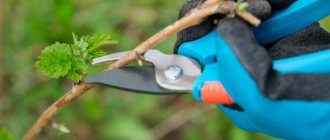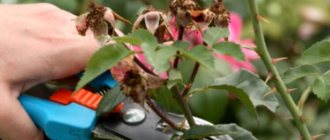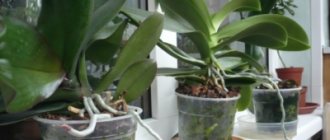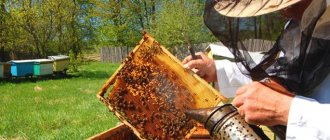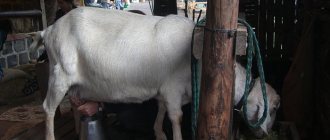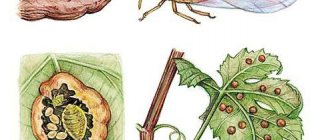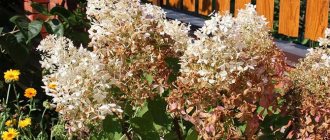In order to organize an apiary, you need to learn many subtle points related to the vital activity of insects, the selection of hives, and the provision of suitable conditions for the existence of bees in different seasons. In addition, it is important to know how to organize a food supply for bee colonies in order to collect honey and other api-products of suitable quality. This information is required to be studied so that the organization of an apiary from scratch is successfully carried out and the work does not take too much effort and does not require corrections.
Preparation
First of all, you should prepare for unforeseen circumstances. Therefore, you need to buy not one bee colony, but at least 3-4. Over time, you can gradually increase your apiary.
Many beginners are interested in how many individuals there should be in a family. We answer - the number of insects can vary from 20 to 100 thousand, depending on the season and the strength of the swarm.
It is believed that it is best to start bee breeding with three colonies. But if you plan to turn your hobby into a business, you will need to purchase at least 50 bee colonies over time.
The location of the hives in the apiary.
It will also be interesting for a beginner to know that a bee colony collects about 20 kilograms of nectar per day, which will ultimately yield 10 kilograms of honey.
It wouldn’t hurt to join the beekeepers’ union. Its members help beginners and are always ready to provide useful tips on keeping bees. You can also purchase beekeeping guides for beginners.
Many beginners are afraid of bee stings. But these insects simply do not sting, since after the bite they die. To avoid bites, you should not make sudden movements or make loud sounds, and wear clean, light, lint-free clothing that does not contain foreign odors. A special smoker is also used to calm the patients. Over time, the bees recognize their owner and sting him extremely rarely.
So, a novice beekeeper needs:
- choose a place for an apiary that meets general requirements;
- purchase beekeeping equipment;
- select a breed so that it feels good in the local climate and is characterized by high productivity;
- Learn the basics of beekeeping for beginners.
Video: Organizing an apiary, beekeeping rules, equipment
You should make an acquaintance with an experienced beekeeper with solid experience. Not everyone is ready to share secrets. God is their judge. However, half are willing to help beginners - beekeepers in their first steps. It is important to understand that beekeeping in the Moscow and Sverdlovsk regions is very different. In many ways, the success of beekeeping technology and the development of an apiary depends on the correct first steps. For those who decide to take up bees, beekeeping forums on the Internet will be interesting and informative. Reading printed periodicals, such as the Beekeeping Magazine, which has been published since 1921, is beneficial.
A lot of necessary information can be obtained on YouTube video channels of existing beekeepers. In 2021, YouTube not only tells the theory, but also shows live video recordings from apiaries. View lectures by famous beekeepers V.G. Kashkovsky. or Cebro V.P. won't be a big deal.
Purchasing bee colonies
Before breeding bees, you need to buy layerings or bee colonies. It's better to do this in the spring. The cost of a family at this time will be higher, but it will immediately produce honey and allow you to get layering.
Insects should be purchased at a distance of at least 5 kilometers from the apiary so that they do not return home. It is advisable to buy dry frames along with them. They are necessary for expanding families. It is better to make a purchase from familiar beekeepers or on recommendation.
You should go shopping after lunch, taking with you either your own hives or special boxes for frames. After purchase, all frames are rearranged into the hive (the frame with the queen is placed first) in the same order as they were originally.
Then they are secured with a board so that they do not move during transportation. They place their hive in the place of the owner's. Flying bees, returning with a bribe, will fly into a new house. Next, they simply close the taphole and take away the structure.
When purchasing a bee family, you should pay attention to several points:
- a sufficient number of flying individuals must sit on the frames containing the brood;
- there should be no gaps during sowing - such brood is called variegated;
- different colors of cells and perforation of the lids may indicate a disease;
- if there are a lot of crawling bees in front of the hive, many of which have deformed wings, then they are sick.
If you have even the slightest suspicion of a disease, then it is better to refuse the purchase.
What a novice beekeeper should know when choosing bees
It is recommended to buy bees at the beginning of the season, despite the fact that at the end they are sold much cheaper. When purchasing bee colonies along with their dwellings, they must be carefully inspected in order to correct any noticed deficiencies in a timely manner. Individuals differ in appearance and character. Their formation took years and depends on the habitat. The most common are:
- Krajina;
- Central Russian;
- Carpathian;
- gray mountain Caucasian.
However, you can only find a pure breed in a specialized nursery due to the widespread occurrence of nomadic apiaries. Although there is no point in striving for this, according to experienced beekeepers, all bees are good in their own way. In addition, there is no guarantee that the brought individuals will not begin to swarm in the new area, even if it is rich in honey plants. Among the common breeds, Central Russians tolerate long winters best, but are more aggressive than Caucasian breeds, which prefer warmer climatic conditions.
So, the best choice for a beekeeper will be the type of insect that is adapted to his climate. Such individuals can be purchased from local sellers, who can also give useful advice to a novice beekeeper. In addition, bees can more easily endure transportation over a short distance. It is recommended to purchase insects at a distance of at least 10 km from the old owner, otherwise they may fly to their usual place of residence.
Purchase terms
In order for the insects to enter into force, it is necessary to separate bee colonies for sale, so that at least 1.5 months have passed since their flight. You can purchase bee packages brought from other areas, but it is better if the beekeeper finds a supplier based on recommendations. The buyer gives money for the frames, preferably there should be more of them, at least 4 pieces, plus insects from another frame are shaken into a bag. All these conditions are discussed before purchase. If the transportation is short, there is no need to leave the food.
How to determine the health of bee colonies
Healthy families can be distinguished even with routine visual inspection. First of all, this is the condition of the wings of insects; they should not be torn and disheveled. Stone brood can be seen by the pieces lying around on the bottom. Printed brood will look holey in a sick colony. Pay attention to the flight activity and seeding of the frames; ideally, one bee colony should have at least 7 frames with brood.
Detailed information about this can be found in beekeeping for dummies manuals. There is no need to be shy and ask the seller questions; his duties also include showing the uterus. It should be outwardly healthy, without torn legs, preferably large. You also need to ask about her age; she should have been bred no later than the past year.
Tips for setting up an apiary
Beekeeping for beginners includes following several important rules:
- When installing an apiary in a populated area, you must first obtain the consent of the neighbors.
- The hives should be located 50 meters from residential premises and 10 meters from the boundaries of the site.
- If your personal plot is small, you will have to give up beekeeping, or find a suitable abandoned plot and rent it out.
- The hives should be placed in a quiet place, well protected from the wind.
- It is recommended to install rows of houses at a distance of 5-6 meters from each other, and leave 4-5 meters of free space between the hives in the rows.
- There should be a lot of trees growing around the apiary, which will help avoid many diseases.
- To ensure optimal lighting, it is recommended to install structures with a slight slope to the south.
- The entrances should be directed inside the apiary.
- The apiary must be fenced (the height of the fence is at least 2 meters).
- The apiary should be located away from highways and crowded places, as these insects do not like noise. If it is located in the country, then you need to choose a remote area where people rarely go.
- Damp areas and lowlands, places near large factors and factories are not suitable for placing hives. Failure to comply with these conditions significantly increases the risk of disease.
- It is desirable that honey crops grow around the apiary, blooming at different times. If this condition cannot be met, then do not be upset: the apiary can be transported periodically.
- If you plan to sell beekeeping products, you will have to obtain a sanitary and veterinary passport.
Beekeeping for beginners will be successful only if all these rules are strictly followed.
Modern beekeeping
Today, beekeeping is no longer just a family business or a means of obtaining a natural product for your family. With the large-scale development of the apiary, various kinds of technological improvements and mechanization are used, bringing our beekeeping to the level of a production enterprise. Farms, cooperatives, and beekeepers' unions are being organized.
When servicing large apiaries the following are used:
- Hydraulic cranes and truck cranes for reloading hives;
- Centrifuges for wax extraction;
- Radial honey extractors;
- Wax furnaces;
- Automatic and semi-automatic machines for packaging honey.
To work on such a scale requires highly qualified specialists. Today, everything about beekeeping can be learned in special educational institutions or courses. And even experienced professionals are recommended to constantly improve their skills to maintain their level of knowledge.
Mobile apiaries are actively used both in amateur beekeeping and in industrial beekeeping, allowing:
- Quickly deliver hives to honey plants;
- Promptly maintain buildings;
- Save space for the apiary;
- Avoid additional insulation in winter;
- One person must maintain the apiary and also move it.
Anti-swarming methods are used in modern beekeeping as a means of increasing productivity. To this end:
- The bees are kept busy so that they are constantly busy building new nests;
- Old frames are regularly replaced with new ones;
- They monitor the degree of egg production of the uterus - good egg production is observed in the first 2 years of her life, then it begins to decline.
When maintaining a colony in a certain operating mode, its profitability remains stable, but the number of brood may decrease. In this case, they resort to artificial reproduction of bees.
Arrangement of hives
Hive Dadan.
You can make houses for insects yourself or purchase ready-made ones. It is better for novice beekeepers to buy them from more experienced colleagues, since production will require special tools and boards made of soft wood. In addition, you will have to strictly adhere to the drawings, which not everyone can do.
The hive must be coated with a special varnish-paint to prevent moisture from penetrating into the home. In addition, in this case the bee will be able to see its house from afar. But you should pay attention to the fact that bees cannot distinguish between black and red shades. Therefore, you should not use these colors for painting. It is not recommended to paint all hives the same color. It's better if they differ.
The hive must provide comfort to its residents and meet certain requirements. It should be loose enough to accommodate brood, honey and bee bread supplies, and serve as reliable protection from rain, dampness and sudden temperature changes.
The house should be warm, but in the summer its walls should not overheat. In the case of a single-wall structure, the wall thickness should not be less than 3 centimeters. If a double-walled hive is used, then the space between the walls is filled with moss.
Beekeeping for beginners - where to start?
Beekeeping is an interesting, but at the same time quite complex activity that requires attention, regular time to work in the apiary, and a love for insects. But to take the first step, you need to decide the following questions for yourself:
- Designate a location where evidence will be installed.
- Select the type of bee houses and decide whether they will be purchased in specialized stores or made independently. It is important to understand that individual production will require time, some effort and skills in handling wood or synthetic building materials.
- After this, select the breed of bees that will be purchased. This is not so easy for a beginner beekeeper, so sometimes they resort to the services of specialists.
- By understanding the basics, in the future it will be possible to acquire additional devices, instruments and other equipment that will make the beekeeper’s life easier.
Pests and diseases
A novice beekeeper should pay special attention to the fight against bee diseases and pests. Otherwise, they will cause serious damage to the bee colony and may even cause its death.
The most common pests are:
- Mol. To prevent its reproduction, you should keep strong families and constantly maintain order in the hives. If the pest does appear, mint or nut leaves are placed in the bee houses, and spare frames are moved to empty hives and smoked with sulfurous smoke.
- Mice. They only cause harm in winter: they chew honeycombs, eat honey and bee bread, and sometimes bees. In addition, they emit a sharp, repulsive odor and are constantly moving, which adversely affects the health of the bee colony, weakens it and can cause death. To prevent rodents from settling in winter huts, their floors are made of clay, to which broken glass is added, and special barriers are installed on the entrances. They also use various baits and traps.
- Ants. To protect the hives from ants, a moat is made around them, which is filled with water or the stands are treated with a special pencil. Some beekeepers raise the hives above the ground, but usually this measure does not protect against ants.
- Birds. To protect insect housing from birds, for whom bee brood is a delicacy, the entrances in the hives must be of such a size that birds’ heads cannot pass through them. At the same time, they must allow several bees to pass at the same time.
To avoid the development and spread of diseases, preventive measures should be carried out in a timely manner. But, if you still cannot avoid the disease, you need to immediately begin treatment. The development of the disease is usually indicated by inappropriate behavior of bees.
All known bee diseases are divided into 2 groups: seasonal and pathological. Of particular danger are pathological diseases, which include foulbrood, paralysis, and calcareous brood. They need to be treated only with medications.
Beekeeper's tools.
According to another classification, a distinction is made between contagious and non-contagious diseases. Infectious diseases, in turn, are divided into infectious (pathogens are bacteria, viruses and fungi) and invasive (develop when microorganisms of animal origin enter the body).
First inspection of the hive
Inspection of the hive is necessary to check the presence, condition and acceptance of a new queen into the family. It is also needed to determine swarming, view remaining food, and more. It is highly not recommended to open it simply out of curiosity; this applies in particular to beginners. Each inspection causes harm to insects, so it is necessary to determine in advance the type of work to be done in the nest and prepare all the necessary tools.
The box is opened in warm weather, since in cold weather the swarm does not leave its home and will actively defend it. However, if necessary, the inspection will have to be carried out in the cold, but not in the rain; you should first light the smoker and put on protection. Insects, sensing smoke, following their instincts, collect reserves of honey and prepare to leave the dangerous, smoky area. A bee with a full stomach cannot bend its abdomen at the angle necessary to make a bite.
Opening the home and removing frames should be done very carefully so as not to harm its inhabitants or cause irritation. To prevent honey, pollen, insects, and especially the queen from falling to the ground, the frames are held vertically above the nest. When leaving the apiary, the boxes must be closed.
Equipment
Keeping bees for beginners requires the preparation of beekeeping equipment:
- hives;
- face protection nets;
- smoker - smoke calms insects, reduces aggressiveness;
- drinking bowls;
- feeders;
- beekeeping frame;
- cages - queens are placed in them for a while;
- caps - with their help they transfer the uterus to a new family;
- roller - hang frames;
- chisels - remove bee glue, clean off wax, scoop out the queen cell, lift the frame;
- sweeping brushes - sweep away insects from the frame;
- forks - open the honeycombs and remove the bar;
- a special knife - cut old honeycombs from frames;
- patterns - placed under the frames;
- road barriers;
- bars - temporarily separate the uterus from the working part;
- boxes for carrying frames;
- swarm - remove and temporarily maintain a swarm;
- insulating pillows;
- foundation sheets - they are inserted into frames and processed with a hot roller, after which they are used for the construction of honeycombs;
- honey extractor – separates honey from honeycombs;
- wax refiners - makes wax from rejected honeycombs.
You will also need to purchase special clothing. The face is usually protected with a mask with a light frame. To protect your legs, you can use gaiters designed for skiers and hunters, and thick gardening gloves for your hands.
Clothes and equipment for the first time
Purchasing the necessary basic equipment and clothing for beginning beekeepers
divided into groups according to purpose:
- Working with and caring for hives: boxes, brushes, chisel, scraper, spray bottle.
- Tools for working with finished products: beekeeper's knife, steam, electric, vibrating knife, sieves, settling tank, table, honey extractor, smoker, wax furnace.
- Special clothing and protective equipment: suit, mask and much more.
- Accessories for bees: distillation trays, drinkers, queen cells, feeders.
- Packaging of finished products: knives, spoon, watering cans, table.
- Reproduction of families, hatching of queens: separating lattices, uterine cells and caps, insulator, nursery and grafting frames, wax bowls.
- Machinery and equipment: on an industrial scale.
The list of equipment for beekeeping can be endless. Each beekeeper selects it with individual preferences. The beekeeper needs equipment to perform specific, time-tested functions with maximum technical convenience.
Queen breeding
The correct choice of queen is important for successful beekeeping. It is noticeably different from worker bees in its large size, elongated abdomen and leisurely movements.
The queen must lay eggs in each cell. If the female misses cells, then she should be replaced.
To keep bee colonies strong, you should breed queens. In this case, the following conditions must be met:
- prepare cells for eggs;
- in the absence of nectar, feed the insects;
- Queens should only be taken from quality parents from strong families.
Bee Reproduction
Two ways to reproduce bee colonies:
- natural - vegetatively sexual and long process of swarming;
- artificial - division path, plaque on the uterus, creation of layering.
Layering method
Reproduction from one family is carried out in the morning, in clear weather:
- place a new hive next to the family;
- install a feed honey frame, with beebread, two frames with brood, with one-day larvae, then a honey frame and with beebread;
- shake off the young from two frames into a new hive;
- install side partitions and insulate;
- cover the entrance, leaving only a passage for the bees;
- after a few days you can move the hive to a permanent place;
- Feed with liquid syrup and give water for two to three days.
Layering from one family leads to weakening; it is better to artificially propagate from several families. Such layers are quite large and require replanting of the uterus.
Division by half of summer
Layers with different age categories of bees are created. Almost a natural division of the family. An empty hive is placed next to a strong family. Half of the frames are rearranged. In the evening, the hives are closed and placed half a meter from their original location. For uniform distribution, the same shape and color of the house is necessary.
Rotational method
Effective rotational breeding keeps bees healthy and prevents disease. Drone brood is removed regularly. New families are formed from old families. The hives are transported to a large number of honey plants.
Advice for future beekeepers and mistakes made by beginners
Experienced beekeepers advise:
- breed only strong families and discard weak ones;
- You can strengthen a weak colony by adding a couple of brood frames to it at the exit, or by swapping families;
- leave at least 4-6 kilograms of honey in the hive at all times;
- expand the nest in a timely manner;
- locate the apiary in such a place that the distance to the honey plants is no more than a kilometer (if it is more than three kilometers, then the bees lose two-thirds of the nectar along the way);
- To control swarming, use the rule of the seventh frame: the appearance of the seventh frame of brood indicates readiness to form a swarm, and to prevent swarming, the previously mentioned layering is done.
Due to inexperience, beginners make many different mistakes. For example, they inspect nests several times a day, opening the hives. As a result, the temperature regime is disrupted, the bees are distracted, and growth slows down.
The most common mistakes made by novice beekeepers include:
- improper care, which disrupts the functioning of the family;
- untimely detection of the disease, which leads to the death of some or even all of the bees;
- improper preparation for wintering, which is why bees do not reproduce;
- lack of food in winter;
- improper installation of the hives: away from the reservoir and honey plants;
- violation of conditions for preserving honey: lack of ventilation in the hives, high humidity.
Wintering and spring revision
In order to preserve the integrity of the hive and the entire bee family until the next season, the process of wintering and spring revision must be approached responsibly. First of all, you should take care of the ventilation inside the houses. If this is not done, dampness will appear in the hives, which is harmful to insects. The condition of the bees is checked once every 2 weeks. They must have enough food left; if it runs out, the supplies must be replenished.
Winter
Some breeds of bees spend the winter in special houses - omshaniks. You can make them yourself, depending on the size of your family. They are required for such breeds as: yellow, Caucasian, Ukrainian steppe, Carpathian. Central Russian bees spend the winter quietly in outdoor hives. You just need to take care of comfortable conditions inside the houses.
With unstable temperatures in the region and sudden jumps from above-zero during the day to severe minus at night, it is advisable to keep even well-adapted bees in an omshanik.
Advantages of keeping insects in a winter hut:
- bees consume less food;
- the service life of the hives increases;
- You don’t have to worry about temperature changes and the death of insects.
Spring
After a successful wintering, when the weather improves and frosts are not expected, the hives are placed in their usual place. As a rule, this happens in April-May. In central Russia, the indicator is the beginning of dusting of gray alder and hazel catkins. There should be several audits: the primary one, during which a quick inspection is carried out and shortcomings are eliminated, and the main one.
An experienced beekeeper will demonstrate how the first spring inspection of the apiary goes. Watch the video:
During the main inspection, which is preferably carried out in calm, sunny weather (the temperature in the shade should not be below 15 degrees), the beekeeper carefully studies the bee colonies, identifies shortcomings and corrects them in a timely manner. It is recommended to keep a record where during the inspection all data obtained is recorded.
The beekeeper must find out:
- The presence of a uterus in the family and its quality (is it sick).
- Number of brood.
- The total number of individuals (whether there are enough of them to feed the offspring).
- Availability of feed supplies.
The revision process includes repairing frames, removing damaged combs,, if necessary, reducing the nest and replenishing food supplies, and replanting a new queen (if the old one did not survive the winter). A little later, when the weather has settled, the beekeeper must completely clean the nest and disinfect the hives. The strength of a family can be determined by counting the number of individuals. If insects occupy at least 6 streets in the hive, this is about 1.5-1.6 kg of bees, such a colony will develop well in the spring and guarantees good honey production in the new season.
Having taken into account the tips on beekeeping and having received a successful first harvest, the beginning beekeeper must constantly improve in a new business. Without knowledge you cannot succeed. By updating information about the life of bees, listening to the advice of experienced colleagues and purchasing modern insect care products, you can eventually become an experienced beekeeper. Today, this activity is still in demand, and a significant segment of the industry remains with novice beekeepers.
0
0
Copy link
Seasonal bee care work
In order for the bees to feel good and produce a lot of honey, contributing to the expansion of the business, it is necessary to provide them with proper care. You should constantly monitor the temperature in the hives, monitor the condition of the bees and brood, and the amount of death.
In winter, the beekeeper builds hives and prepares equipment. In early spring, the entrances are opened and bee colonies are inspected, debris and bodies of dead bees are removed, and insects are fed.
It is recommended to unite weak families, and add a queen to those without queens. Then the hives are inspected once a week. In winter, it is not recommended to inspect the hives in order to conserve heat.
If there are no bribes, then the bees are fed with sugar syrup every other day. For two days, the family will need about 500 grams of syrup.
Honey collection
Before the honey harvest season, bees should be provided with a sufficient number of honeycombs. If the family is strong, then the traditional Dadan hive set will not be enough. Therefore, it is recommended to add additional housings or install paired extensions.
Some beekeepers introduce another queen into the hive during the honey harvest season. But in such cases, it is necessary to install a diaphragm between the females. When the main bribe is received, one of the females, less fertile, will have to be removed. Another option is to temporarily remove the queen from the nest, or replace it with a barren individual. Such provocations can increase honey yield by 30%.
Preparing for winter
The hives should be well insulated for the winter (part of the frames should be removed and the free space should be filled with insulating pads), the entrances should be closed, high-quality ventilation should be provided, and it is advisable to install barriers for mice. You should also prepare a winter hut - this is the name given to the warm room into which the hives are moved for the winter.
You need to make sure that the insects have enough food. You should definitely leave the honey frames in the nest; they can be partially (30%) replaced with sugar syrup. In the southern regions, a bee colony eats about 15 kilograms of honey during the winter, and in the northern regions - about 20.
Bee pavilions.
The first season of a novice beekeeper
After purchasing everything you need for beekeeping, preparation of the site for the future apiary begins. The ground is cleared of snow or debris and sprinkled with ash; there should be no accumulation of water on it. Houses are not installed among coniferous trees, as this can cause the swarm to begin to hurt. Ideally, hives should be in the sun in the morning and in the shade during the day. If this cannot be achieved with the help of trees, improvised means are used for shading or climbing plants are planted. They will serve as a guide for the inhabitants of the apiary; for the same purpose, objects of bright colors are placed on the houses or nearby.
Nests are not placed on the ground; stands are provided for them. Before moving in, the boxes are carefully inspected and any problems found are eliminated. Disinfection, drying, painting, and preparation of components for assembly are carried out. If the boxes are new, you can move them in immediately.
Preparing for winter
Organizing wintering is necessary to reduce mortality and preserve the health and energy of insects in the spring. An inspection is carried out in the fall to review all deficiencies and prepare what is necessary to eliminate them. Particular attention is paid to frames with food; they must be completely filled and installed around the perimeter of the box. Methods for forming a nest can be as follows:
- Double-sided arrangement can only be done for strong bee colonies. In the middle of the nest there are 2 frames with two kilograms of honey each. Next, frames containing 4 kg of honey are placed around them. The result should be at least 30 kg of feed.
- For young families, the “ beard ” method is suitable, which consists of installing full-copper frames in the middle and descending from them. The total quantity of supplies is 15 kg.
- The corner option involves installing a full copper frame on one edge and placing the rest behind it with less feed. The outermost frame must contain at least 2.5 kg of product.
Wooden blocks are placed perpendicular to the frame so that the sleepy swarm can better orient itself in space. Light-colored honey is considered the best food; it is recommended to first test it in the laboratory for the presence of honeydew. During the winter period, bees eat about 25 kg of product; it is also necessary to take care of the availability of honey-bread frames.
Basics of beekeeping, video - lessons for beginners
Organizing an apiary from scratch, where to start for a beginner:
2. What should a novice beekeeper do in the apiary at the end of spring, beginning of summer:
One hundred tips for a novice beekeeper:
Beekeeping for dummies:
Features of bee breeding in pavilions
To make the hives convenient to transport, they are installed in a wheeled pavilion. It is best to use plywood hives in this case, as they are lighter. It is advisable to paint each house a different color to make it easier for the bees to find their home.
The pavilion is insulated with glass wool, which makes it possible to keep bees in it all year round. In addition, the costs for it will be much lower than for the purchase of a stationary structure. One pavilion can accommodate up to 30 families.
Settling a new hive
Previously, settlement took place on the first day of acquiring a bee colony; now beekeepers let insects into the new home in the evening of the next day, giving them the opportunity to calm down. The hive is first disinfected and thoroughly dried if it is not new. Next, a frame with built-up wax and a small amount of honey is placed in it.
The number of frames will be calculated based on the weight of the bees; approximately 4 pieces of the Dadan type are placed per 1 kg; in multi-tiered Langstroth-Ruth hives, about 6 pieces. It is recommended to settle in the evening; this can be done in two ways: pour the swarm out through the top of the nest or help them crawl into the entrance themselves.
Methods for arranging hives
Beekeepers place nests in one of 3 common ways:
- The checkerboard arrangement is suitable for a small area; with this arrangement, the houses are protected from the wind. The downside is that insects can confuse their homes.
- in rows over a large area.
- Arrangement in groups of 2-5 pieces is suitable for any area. With this method, it is necessary to set guidelines.
Arrangement of hives in an apiary
Almost no one places hives in circles and triangles. It is recommended to paint each box a different color, preferably light. It is not recommended to make pasik paths.
How to open an apiary - how many colonies to buy, advice from an experienced beekeeper to a beginner:
Income and expenses: is there a benefit?
Often a novice beekeeper wonders whether beekeeping is profitable. According to experts, the cost of raising bees in the first year will be $3,700 for 20 bee families. With this money you will need to buy bee colonies, hives, beekeeper equipment and apiary equipment, as well as means for preventive treatments.
But don't be afraid of these costs. Already in the first year, insects will produce more than 1,300 kilograms of honey, as well as wax, beebread, propolis, brood and pollen. As a result, you will be able to earn about $4,400. Consequently, the costs will pay off in the first season, and in subsequent seasons the income will only increase.
First problems and their solutions
Almost all problems arise due to poor preparation of the swarm for winter. During this period, families must have:
- insulated dwellings;
- a sufficient amount of honey and bee bread;
- quality honeycombs.
The death of bees is considered a problem not only for beginners, but also for experienced beekeepers, and in most cases it is associated with the use of pesticides. Thus, insects simply have nothing to eat. Mortality is also affected by varroa, the presence of a mite can be determined by twisted or missing wings and legs, a large number of dead individuals in the nest, yellow color and rotting larvae. The disease is combated by chemical, physical, zootechnical, folk methods and the removal of infected brood.
As a result of insufficient ventilation, exposure to the open sun and crowded nest, steaming may occur. In this case, the hive must be opened to provide the swarm with free flight. The bottom of the box is cleared of pestilence and pieces of honeycomb. Bees are also plagued by many other diseases; more detailed information about symptoms and treatments can be found in special guides on how to keep bees for beginners.
Mistakes of novice beekeepers and ways to solve them:
Care and maintenance
The first sign that something is wrong in the hive is the noise that arises there. There are many reasons for this: unsuitable microclimate (high humidity, insufficient ventilation), problems with the queen, etc. The beekeeper finds this out by removing honeycomb frames one by one. In this case, you cannot stand in front of the entrance. In bad weather, in the absence of a bribe, the bees are irritated and aggressive. It's better to work with a smoker. It should be remembered that bees are irritated by strong odors. To avoid being bitten, it is better not to eat garlic, wear perfume, much less drink alcohol.
Inspections are carried out once every two weeks. Once again there is no need to disturb the family.
A bee colony can develop normally only if there is a healthy, young queen under 2 years of age. It is recommended to change the uterus every year.
A novice beekeeper needs to monitor the health of the bees very carefully. The most dangerous mites for them are varroa mites.
What you need to get started
A little ABC of beekeeping: first get permission to keep insects. Bee families are annoying and can disturb neighbors. There is regulatory documentation regulating the requirements for organizing an apiary. Beekeeping standards and queen markings have been developed. They study the terminology of keeping bee colonies and acquire the necessary equipment.
Conditions
It is allowed to keep apiaries if beekeepers breed peaceful breeds of insects. The first step is to obtain permission; it is important to obtain the written consent of the neighbors. Beekeepers often sow honey crops near the apiary; it is convenient for insects to collect honey near their home.
Finance
How to start beekeeping? Create a business plan. Setting up a small apiary will cost 50 thousand, including the purchase of bee colonies (you will need a hive) and the necessary equipment. A bee hive of insects will cost 5 thousand rubles. The price of a set of frames is 1000 rubles. - hive.
Consumables (beehive, frames, pillows, foundation, canvas, etc.) cost about 2 thousand rubles. Bee package (young brood of insects, queen, frames) – 4.5–5.5 thousand, estimated age of the queen, weight of the colony, breed. It is necessary to purchase protective clothing, you need overalls, a wide hat, wrapped in netting and annoying insects are isolated.
Inventory
In addition to bee colonies (the bee hive is taken into account), the apiary will require a lot of other things:
- It is necessary to stock up on special clothing, buy overalls, you will need thick light (white) fabric, a wide hat wrapped in dense mesh - a barrier to bee colonies.
- Diaphragm dividing a bee hive.
- Spare frames, wire that is stretched in rows.
- Foundation briquette, replacement of natural wax.
- A lattice separating the uterus, the rest of the family is kept separately. The lattice performs the necessary function (insects, hitting, shake off pollen and pollen).
- The smoker will provide a protective curtain that repels insects.
- A new chisel that is convenient for lifting lids. The old one is unusable.
- A fork, another tool for printing out honeycombs.
- Pollen catcher - equipment that sucks bee pollen and pollen.
- A honey extractor is like a separator.
Literature
We need to study the theory, read notes from experienced people about the apiary and insects. Author Lupanov M.V. Two more books deserve close attention:
- “Beekeeper's Tips”, author M.F. Shemetkov. The basic principles of how to conduct business in an apiary are outlined in accessible language, and methods of protection are described (the bee hive is treated with safe insecticides and glued). Helpful information.
- “The first steps of setting up an apiary”, author V Yu Shimanovsky. The ABCs of a novice beekeeper are easy to find, link https://www.beetools.ru.
Basic knowledge
The most important aspect at the initial stage of bee care is the arrangement of the site. The best option would be to take some advice from other beekeepers on where to start, or, as a last resort, study the literature written by practitioners of this business, perhaps take a beekeeping course.
Before you start beekeeping, you need to assess your resources and capabilities: availability of free time, free space near your home. You should also test yourself and family members for bee allergies and be willing to exercise due patience.
A manual for a novice beekeeper says that the most important thing in breeding bees and arranging an apiary is compliance with all requirements and rules. If possible, you need to take lessons from experienced beekeeper neighbors and study special literature. To avoid allergies to bees, it is necessary to have an area near the house. You need to have patience and free time. It’s not for nothing that the proverb says: “Keeping bees in the apiary is not lying in the cold.”
Questions before starting bee keeping
Before starting bee breeding, it is very important for beginners to be sure of their desire and ability. Bees are very finicky insects to breed, requiring a lot of attention and effort. There is a certain list of questions that everyone needs to answer before starting.
Do-it-yourself hive technology
Before starting an activity, it is necessary to study several fundamental questions and only then proceed to the beginning of action:
- Basic aspects related to the maintenance, nutrition and wintering of bees. Caring for bees at different times of the year. Particular attention is paid in spring.
- The essence of the functioning of a bee colony, the distribution of responsibilities among them. Particular attention is paid to breeding and hatching larvae, which must not be forgotten.
- The principle of the construction of the hives themselves. How they are equipped, and how to properly install and repair them. How to properly place it on the site.
- Features of storage and storage of honey by bees. And also evaluate all the qualitative characteristics of different types of propolis and honey, what they consist of and how they are used.
By analyzing and studying all of the above issues, you can prepare in advance for all unpleasant situations in the process of bee breeding.
When preparing for breeding, a novice beekeeper needs to carefully study various manuals and video lessons, and take beekeeping courses. There is a whole beekeeping academy. Most of the recommendations in them are similar, although, undoubtedly, differences can be found, which are largely related to the place of breeding, the specifics of bees and the personal experience of beekeepers. One of the most famous is Gennady Stepanenko. Everyone decides where to start and what exactly to use. The most important stage of action takes place in the spring.
Neighbours
Breeding bees for beginners can affect not only the beekeeper himself, but also his closest neighbors, since it can be difficult to limit the flight range. Most people do not live in a remote area, but among other farms. It will be much easier if there is already someone in the neighborhood who raises bees. But if you become the first, then you need to stipulate in advance that you are planning to breed insects, and the measures that you plan to take to prevent them from spreading to other people. The Institute of Beekeeping is not widely represented in modern Russia. This academy is more typical for other countries.
Number of hives and their storage in winter
The scale of the apiary needs to be thought out in advance; of course, it is possible and even better to start with a small amount and, once you have mastered it, move on to expanding your holdings. It is important to remember that each hive must be maintained all year round and in particular stored during the winter. These are the basics of beekeeping.
Also, each hive requires a certain number of flowers. Therefore, setting up hives in an area with little spring flower supply may result in bees leaving the hives and flying to more fertile areas.
Time
It is necessary to think in advance about how and in what way the process of caring for bees will take place as part of beekeeping for beginners. In most cases, proper care will require constant care, which means a lot of free time. If a city resident wants to start beekeeping for beginners, he will need to either hire someone who can provide constant care, or change his lifestyle and place of work.
Help and mentor
As in any similar business, it will be difficult for a novice beekeeper; in any case, you will need a mentor who can help and advise at the right time on the basics of beekeeping. It is better to find such a person in advance and negotiate the terms of cooperation. This person may either have a direct interest, for example financial, or a sincere desire to help. The basics of beekeeping are a definite job for him. One of the most famous is Gennady Stepanenko.
Money
Bee breeding can be a good profitable business, but initially it will require serious financial investments. We are talking about purchasing equipment and various types of devices. Moreover, there are no guarantees of success for a novice beekeeper, so there are risks. The area where the apiary is planned to be built is also important. It is worth taking into account not only natural spring features, but also the competitiveness of the environment. Calculate in advance possible options for promoting the finished product. Quite a lot of work remains to be done in this regard.
What equipment does a beekeeper need?
Without a professionally selected tool in its full set, you should not begin to implement your plan for arranging hives. All instruments for honey production are divided into several main groups:
- For direct maintenance of the apiary.
- To serve the family.
- For processing apiary products.
- Transport and other auxiliary tools.
For direct maintenance of your hives and contact with its inhabitants, you will need, first of all, high-quality equipment. Without special clothing, your venture may end badly: these insects will very persistently protect their family. The basic kit includes:
- Overalls.
- The sleeves are made of very dense material.
- Wide headdress with anti-mosquito net.
- Gloves.
Clothing should be made in such a way that the sting does not pierce it when bitten. Particular attention should be paid to protecting the scalp and face. Bites in these places are especially painful. The color of the material should be light, or preferably white. This group also includes a device such as a smoke generator or smoke maker. It is needed to euthanize bees and expel them. Branches are placed in the smoke chamber itself and set on fire. A stream of smoke is directed at the insects, which then leave the hive.
To serve your family you need to have the following supplies:
- Feeder and drinker.
- Uterine cell and uterine cap.
- Panel for separating the nest.
- Bee remover.
- Roevnya.
- Brush made of natural materials.
A feeder will be needed to place sugar syrup in it when feeding. The bees are temporarily kept in the queen cell, and the queen cap is used to cover the queen when transferred to the swarm. A bee remover is used to separate bees during collection. A swarm is temporarily contained in Roevna.
When you receive the first products from the apiary, you will need special tools for processing them. These include:
- Knives with different blades and a container for heating them.
- Honey extractor.
- Honey sump.
- Container for storing honey.
- Tool for wax processing and frame extension.
A set of knives is needed to open honeycombs. They must be used warm. A honey extractor allows you to separate honey from the honeycomb, and a honey sump allows you to clean it. After obtaining a pure product, it is placed in special containers, after which the wax is removed and processed. The final stage is processing the frames to build them up.
After purchasing equipment, clothing and bee colonies, the apiary is installed in a prepared place. The choice of location is one of the most important factors for a positive outcome. The flight radius of bees reaches 2 km. There should be no industrial facilities in this zone. It is desirable that the terrain itself protects the bees from strong winds and contains a sufficient amount of honey resources.
Tips for transplanting to a new hive
Sometimes water gets into the bee house, mice, martens, and moths enter. In this case, it is better to transplant the bees into a dry and clean house, pre-heated with a blowtorch.
This is done like this:
- Behind the hive, a clean house is placed on a stand close to it. The gap between the hives is covered with canvas so that insects do not fall onto the cold ground.
- In the new house they keep the entrance closed. At the same time, the lids are removed from both houses.
- A honey frame and drying ground for future brood are installed in the new hive.
- In the house with the bees, they move the canvas aside and blow a little smoke over the frames.
- Then they transfer the brood frames, quickly scraping off any adhering debris with a chisel. Moreover, they clean the frames over the old hive! And the bees are brushed off them with a soft brush into a new house.
- Be sure to clean the hangers of the frames from propolis, since they are difficult to install in a new place.
- After transfer, the formed nest is covered with a clean canvas.
- Place honey bee frames at the rate of 8 kg of feed for every 3-5 honeycombs occupied by bees. Or install a 4-liter feeder. Fresh sugar syrup is added to it after about two weeks.
- The remaining bees are carefully swept with a brush or goose feather from the bottom and walls of the old house onto a sheet of cardboard, and then poured under the canvas into the new hive.
- The nest is closed, insulated with top and side mattresses, and a lid is installed.
- The entrances are opened wide. After the flyby, the gaps are reduced by two thirds.
How to treat diarrhea in bees
